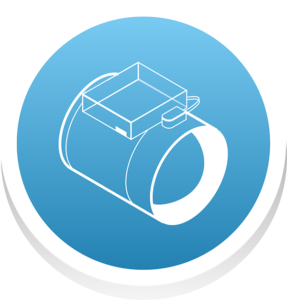Application Guidance: Demand Control Ventilation Controllers
When selecting a DCV controller, consider the following application guidance:
DCV controllers may be stand-alone or integrated in a thermostat for an HVAC system. They have a variety of data output and input options, which may include:
- Analog (voltage or current signals)
- Digital (primarily BACnet protocol)
- WiFi to cloud-based data storage
Analog signals are widely compatible with all building automation systems (BAS) and damper actuators. BACnet is also generally compatible with most BAS but may require additional hardware and specialized expertise to interface between the controller and BAS. WiFi to cloud-based data storage systems are growing in popularity and have some benefits and drawbacks that should be considered:
- Benefit: Faster installation with no communication wire
- Benefit: Automatic updates with new feature releases as software is improved over time
- Drawback: Loss of WiFi or internet services can temporarily render devices inoperable
- Drawback: Connectivity to existing BAS hardware may be difficult or impossible. An application programming interface (API) may allow for interfacing with an existing BAS.
- Drawback: Long-term reliance on a vendor for system operation as well as data subscription and storage costs
The DCV controller and the associated BAS may have reporting capabilities to alert facilities management about various faults. In most cases, the type of alert will rely on how the BAS system is configured. Some controllers with WiFi capabilities can have additional options such as email or text alerts. Some of the possible faults that can trigger an alert include:
- Damper positioning fault
- Static pressure or airflow out of desired range
- Air temperature out of desired range
- CO2 concentration out of range
- Sensor errors (disconnected or unpowered)
The available reporting capabilities will depend on the individual product and the availability of signals or ancillary devices. For example, some damper actuators do not have a feedback signal, so a positioning fault would not apply.
DCV controllers commonly have a small LCD display for commissioning, maintenance, and debugging. If the DCV controller is integrated with a thermostat, there may be more display options and visual feedback for occupants. Controllers with WiFi cloud connections may also have an app or website that displays additional data. Common indicators include system mode, CO2 concentration, temperatures, and damper position. If the DCV controller has an integrated CO2 sensor and it is intended to fulfill the requirements in California’s CalSHAPE program for schools, the display must be accessible to the teacher.
Typically, DCV controllers are installed close to the outdoor air intake, in an accessible but safe location. This allows easy access for temperature measurements and sending signals to the damper actuators. However, controllers that are integrated with thermostats, or have wireless capabilities, may be installed in the occupied space on the wall of the room being monitored at the height of occupant heads (3-6 feet above the floor) and ideally away from doors and openable windows. If possible, install the sensor near the HVAC return grill. Since specific products may have additional installation considerations, review and follow all manufacturer specific installation instructions.
Special considerations should be taken if additional devices or options are needed. If the controller does not have an integrated sensor, proper care must be taken to ensure that a compatible sensor is purchased. For example, manufacturer A may support a 0-10V analog signal for CO2 sensing, but manufacturer B could support a2-10V or some other type of signal. Care should also be taken to ensure digital communication busses are compatible.
